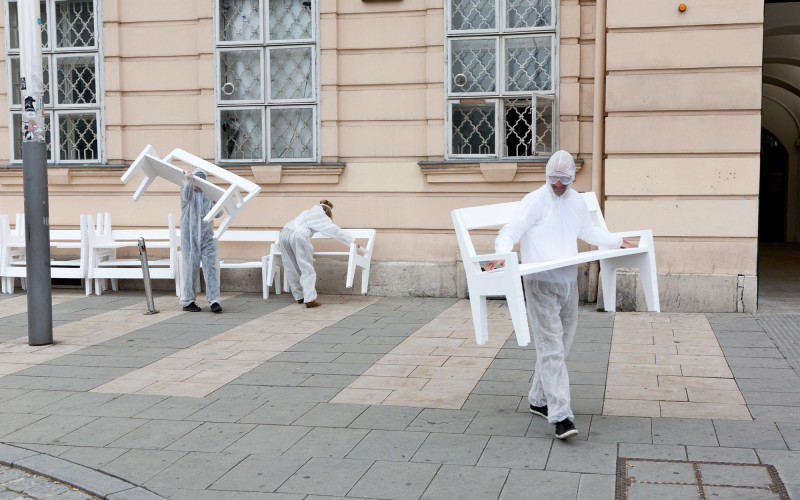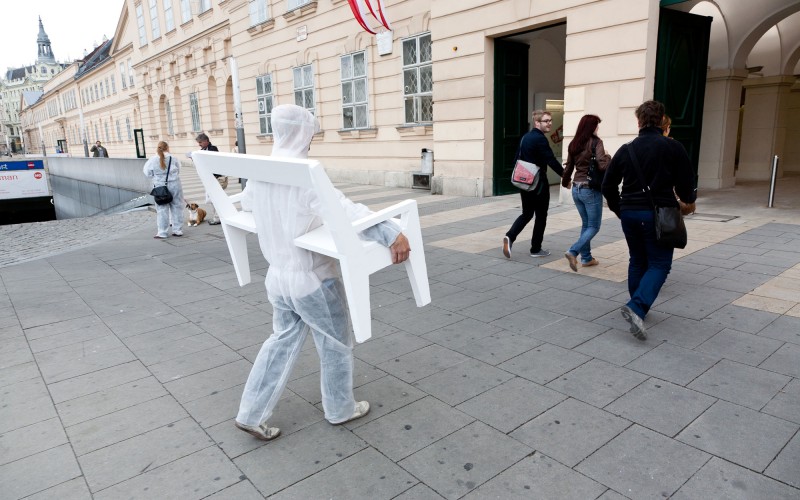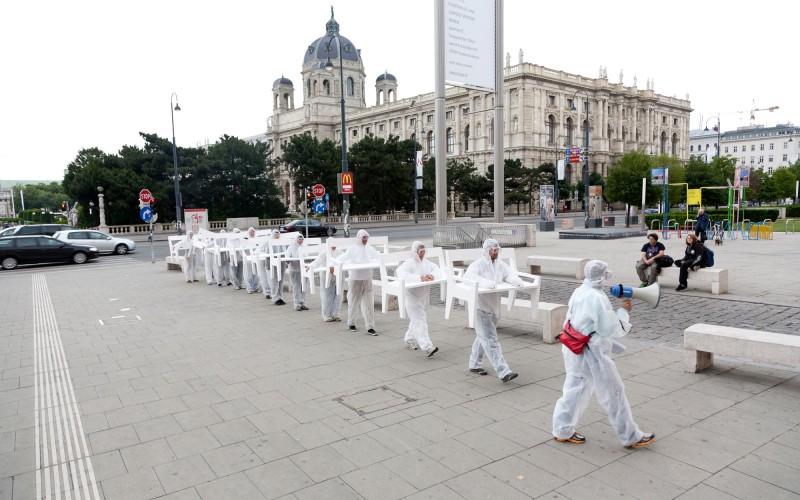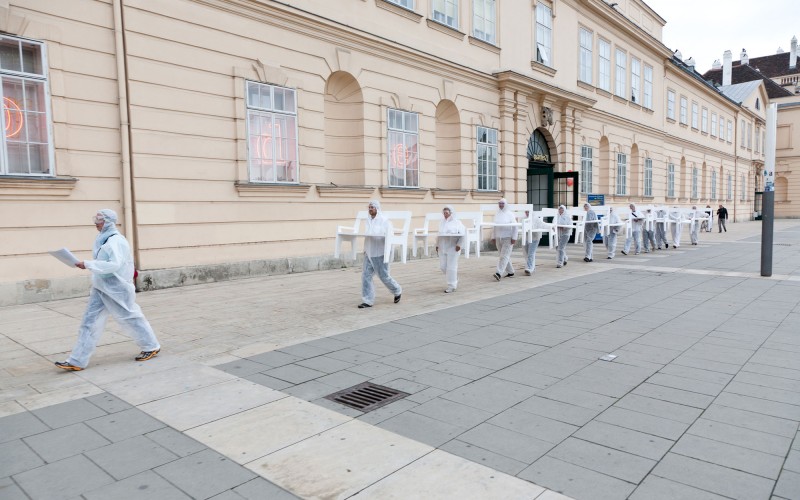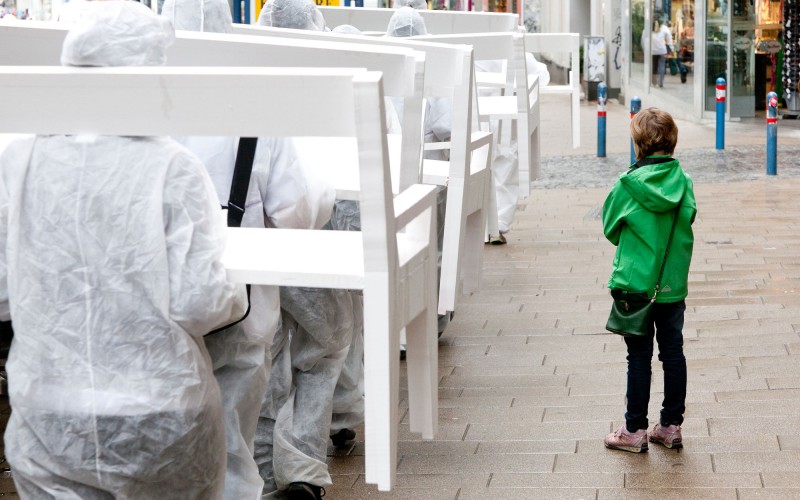A Bench Makes No Space
Everything is programmed. Everything is regulated, everyone is catered to, everything is laid on. Everyone is kept informed, supervised, provided for, indoctrinated – patronized. Public space expresses the sociopolitical consensus: living together requires the highest possible level of supervision and regulation. Programmes stipulate how one should behave in the space and how and where help can be found. This is posted on boards and information is also available from uniformed attendants. This is specified by the equipment:
Bench: Sit (DON’T lie!)
Cage: Ball games (NO cards!)
Sand: Play (NO sunbathing!)
Flowers: Look (DON’T pick!)
Fruit: Don’t plant – Bees are too dangerous …
There is something for each target group; there is a rule for every conflict. In the process, the space, the free space, the freedom is lost.
Therefore: Yes to freedom from programmes, to free areas, to recreational areas that can be interpreted. To engagement and confrontation. To autonomy.
Vienna, Architekturtage
5.6.2012
www.architekturtage.at
- © Johannes Hloch
- © Hannes Gröblacher
- © Johannes Hloch
- © Johannes Hloch
- Karoline Seywald, Hannes Grölbacher, Lilli Licka © Johannes Hloch
- © Johannes Hloch
Vienna, Urbanize Festival
6.10.2012
www.urbanize.at
© Manfred Schwaba
Pieces of outdoor furniture send a clear message. They specify what can and should happen in the spot where they are placed. They also suggest what should not happen there. In the attempt to demonstrate that all groups are taken into account, use is made of far too many objects and pieces of equipment that assign the space to a particular group. This pre-programmes activities and subtly undermines freedom. The spatial quality and the atmosphere get lost, as does the free space per se.
The installation of oversized equipment in undersized spaces intertwines with excessive regulation. On the one hand, there are the dos and don’ts governing use of the space, on the other, the issues of maintenance, organization and supervision. This means that people are completely catered to in the recreational space: for every activity, a corresponding piece of equipment is provided, all activities are spatially allocated, people are sorted: children, young teenagers, older teenagers, young adults, parents, girls, women, men, seniors – each has their own defined space. Checks are made of the rubbish and conflicts are monitored so that there is no longer any need for civil negotiation – there are authorities to be called upon, there are rules that can be invoked.
The equipment itself takes up space and is covered by rules. In designing recreational space, where the concept is geared to the use of outdoor equipment, two aspects are important:
1. The space intended for free use by members of the public should act more to suggest than to specify an activity; it should encourage individual initiative rather than prescribe activities; it should facilitate engagement with others, not predetermine it. Surprises should happen and there should be scope for unexpected developments.
2. It is not necessary for everything to happen everywhere in the city. The particular focuses of the different recreational areas make them exciting and distinctive and save space.
3. The most important quality criterion for a recreational space that is to remain pleasant and usable over the years is its spatial quality. The basic concept, the proportions, the sight lines and the material must all be right.
It takes more than a bench to make a recreational space!

